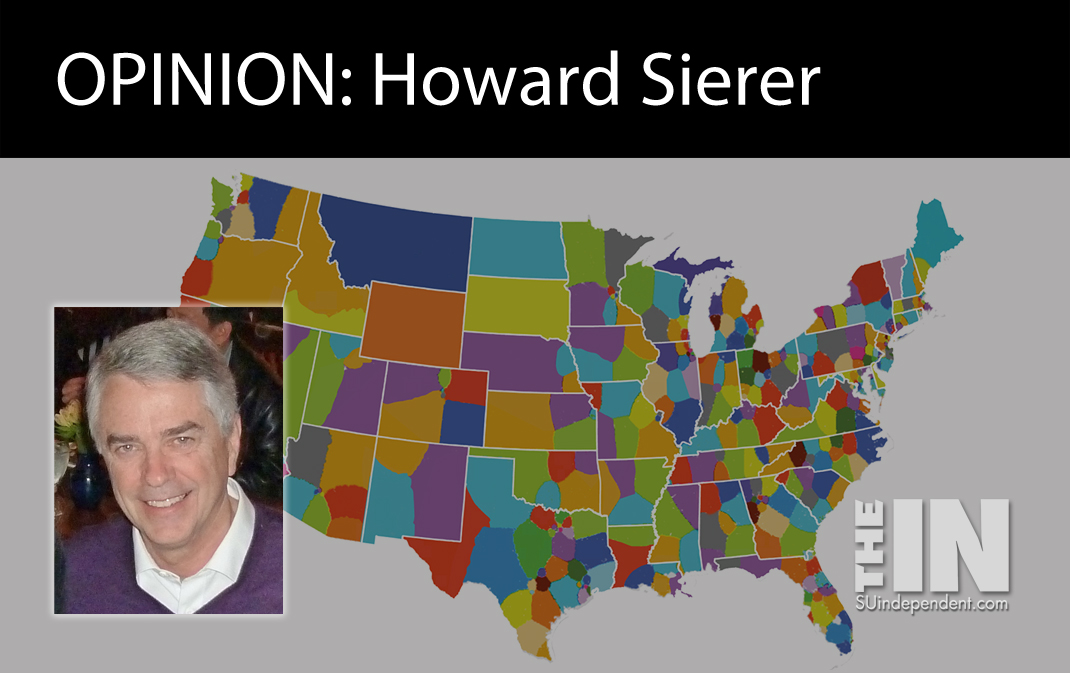
Racial Gerrymandering Coming To An End
– By Howard Sierer –
A glaring vestige of racial preferences looks like it’s heading to the dustbin of history. And we can thank civil rights leaders and the Democratic Party for recognizing that it’s no longer needed.
The Voting Rights Act of 1965 prohibited racial discrimination in voting. Well, kind of. It was aimed at ending blatant racial discrimination practices such as literacy tests and poll taxes, especially in the South, that suppressed black voting. So far, so good: the act greatly increased the numbers of black voters nationwide.
But to the consternation of civil rights advocates, it didn’t lead to a proportionate increase in the number of black elected officials. This gave rise to an unusual political alliance between liberal civil rights leaders and Republicans in state legislatures and city councils.
Election districts were redrawn – gerrymandered – to create minority-majority districts, that is districts that had a majority of black or Hispanic voters in their boundaries.
This practice accomplished its intended purpose. For example, following the 1990 Census, states created 13 additional majority-black Congressional district boundaries. The result: 13 additional black Congressional representatives. However, to the Democratic Party’s frustration, it lost at least 10 seats in neighboring districts to Republicans as minority voters were taken from these districts.
Republicans had discovered that they could play to minority demands for more elected officials while bolstering, or at least not losing ground, to their own electoral interests. Hence, an unusual confluence of interests arose between some of the Democratic Party’s most liberal officials and the Republican Party nationwide with both of them pushing for more majority-minority districts.
The Supreme Court took the punch bowl away when it ruled in Shaw v. Reno (1993) that using race to establish electoral boundaries violated the 14th Amendment’s equal protection clause. The Court opined, “Legislation that classifies a person or group of people solely based on their race is, by its nature, a threat to a system that strives to achieve equality.”
Despite this ruling, majority parties in various states have tried to maintain the practice by using or at least claiming to use, other criteria that produce a similar result. For example, lumping together voters by income can produce a similar result in areas with large concentrations of minority populations.
Thankfully these race-based practices have outlived their usefulness.
For decades, civil rights activists have assumed many white voters wouldn’t choose blacks regardless of the candidates’ qualifications. Many have clung to that assumption even as election results around the country showed otherwise.
Only slowly have civil rights leaders come around as majority-white states and cities elected black governors, senators, and mayors. Our majority white nation elected a black president; Obama performed better in 2008 among white voters in Texas, Virginia, North Carolina, South Carolina, and Georgia than did Kerry in 2004 and Gore in 2000.
In 2018, 14 black Democrats won Congressional seats in white-majority or plurality districts; eight were first-time candidates. In overwhelmingly white Utah, blacks Mia Love and Burgess Owens have won elections to Congress in recent years.
In an interesting demographic twist, seven black Congressional lawmakers in Congress today represent districts that were majority black in 2010 but according to the 2020 census are now more diverse.
Former South Carolina state representative Bakari Sellers, a veteran of that state’s redistricting wars and now a leftwing CNN political analyst calls for ending black lawmakers’ “unhealthy, unholy alliance” with Republicans. He says, “Republicans are attempting to unduly pack black voters in majority-minority districts that black people already dominate in order to increase GOP control.”
It’s time for members of both parties to put a wooden stake through the heart of unconstitutional racial gerrymandering. I agree with Sellers when he said that if a candidate can’t win in a district where less than half of eligible voters are black, “then [they] don’t really need to be in Congress.”
Viewpoints and perspectives expressed throughout The Independent are those of the individual contributors. They do not necessarily reflect those held by the staff of The Independent or our advertising sponsors. Your comments, rebuttals, and contributions are welcome in accordance with our Terms of Service. Please be respectful and abide by our Community Rules. If you have privacy concerns you can view our Privacy Policy here. Thank you!
Click here to submit an article, guest opinion piece, or a Letter to the Editor




